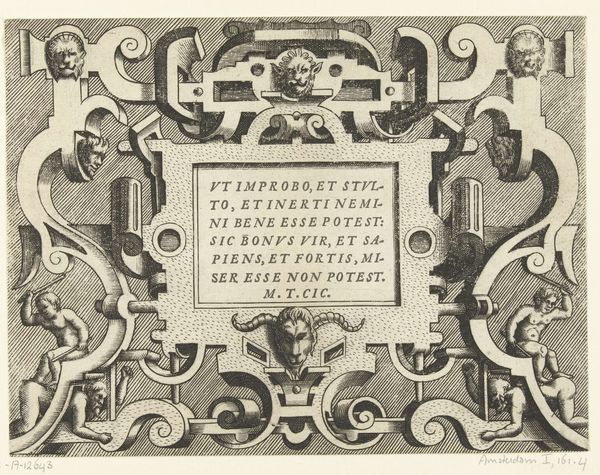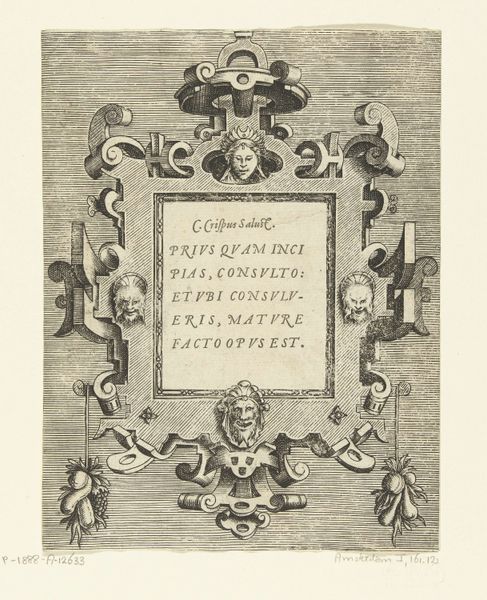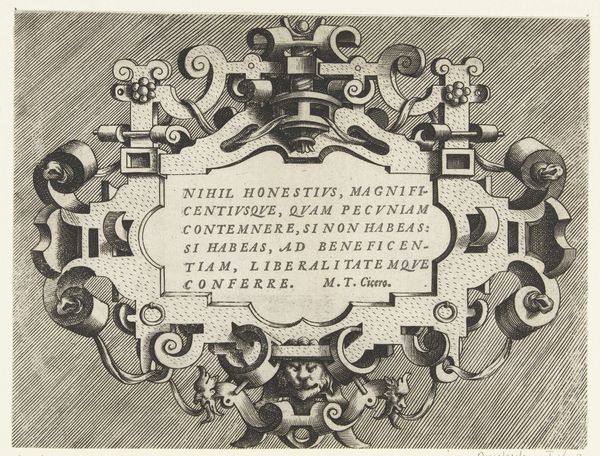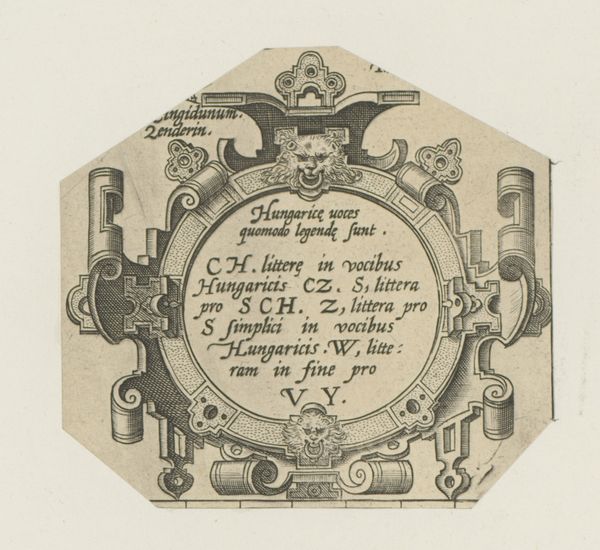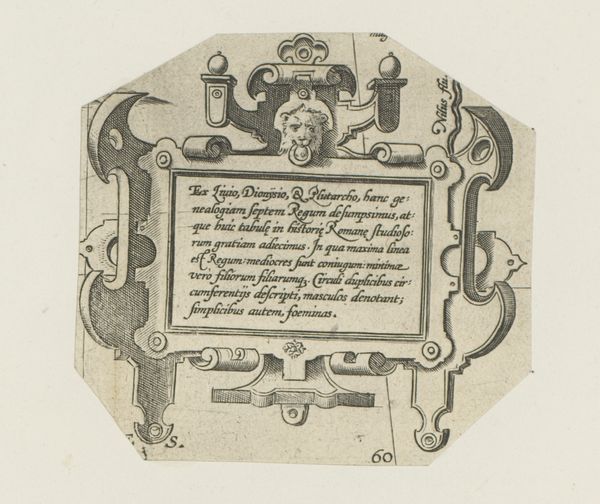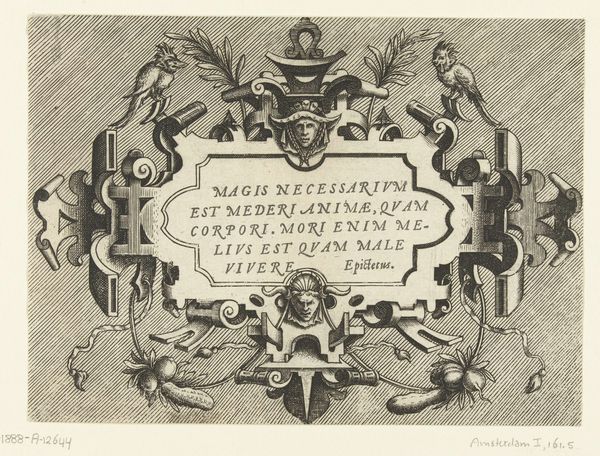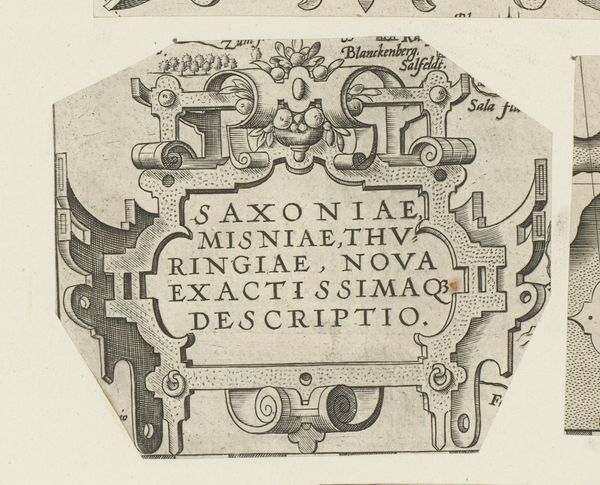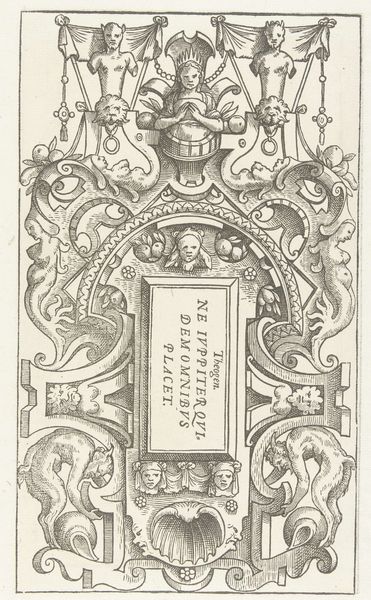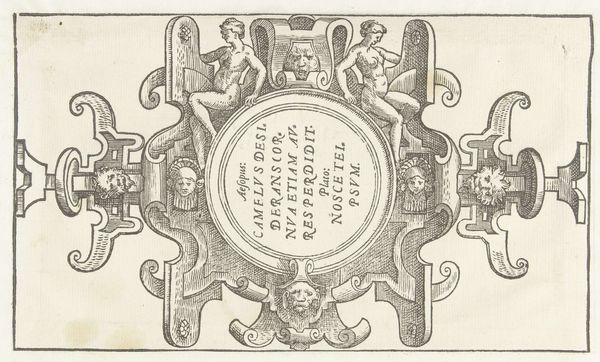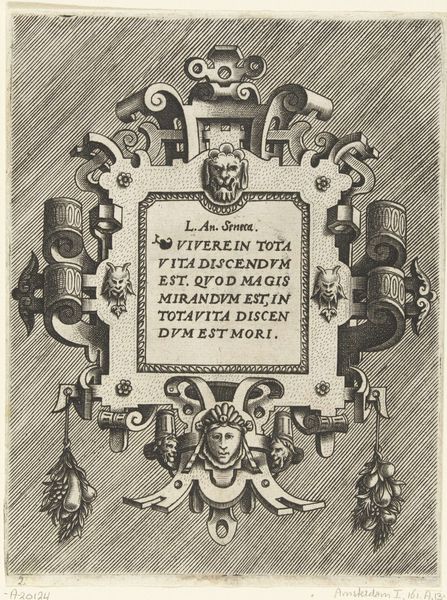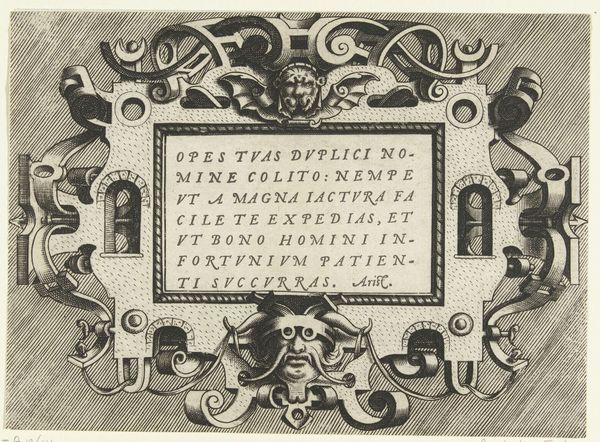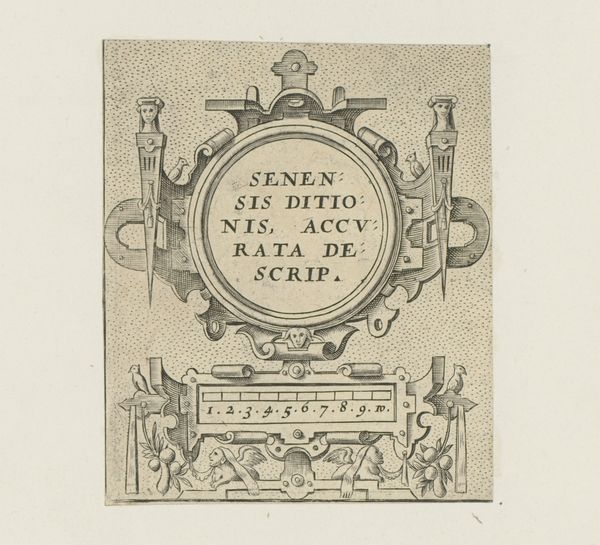
graphic-art, print, engraving
#
graphic-art
# print
#
old engraving style
#
11_renaissance
#
engraving
Dimensions: height 77 mm, width 119 mm
Copyright: Rijks Museum: Open Domain
Editor: This engraving, titled "Driehoekige cartouche met rolwerk," is an intriguing little fragment dating back to 1594. The texture created by the engraving is incredibly detailed. What stands out to me is the framing; it seems almost like a study in miniature power structures. How do you interpret this work? Curator: I see this "Driehoekige cartouche" as a window into the socio-political landscape of the late 16th century. Engravings like this were instrumental in disseminating information and asserting authority. The triangular cartouche shape itself demands examination. Why this specific form? Could it symbolize stability, hierarchy, or perhaps even the perceived strength of the ruling powers? Editor: That's interesting! The idea of a deliberate choice in shape hadn't occurred to me. The inscription "Cum Privilegio decennali" also caught my eye. What does that tell us? Curator: Exactly! "Cum Privilegio decennali, 1594," meaning "With privilege for ten years, 1594," indicates a legally protected right to reproduce this image, effectively a copyright. This wasn't just art; it was intellectual property, tied to economic and political power. This highlights the artist's or publisher's position within the prevailing legal and economic structures. Who benefited from controlling the image, and whose stories are silenced by its formal language? Consider how those power dynamics resonate today. Editor: I see now, it goes beyond mere decoration. Thank you for clarifying. Curator: It reveals how even seemingly decorative arts become important in power relationships in shaping societal norms and power. I hadn't considered that shape earlier, so thanks for the initial observation.
Comments
No comments
Be the first to comment and join the conversation on the ultimate creative platform.
